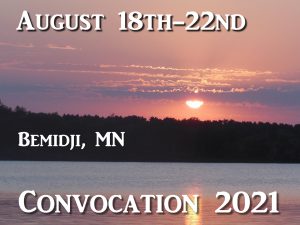It’s this comment from ‘How soon is “The Time of Jacob’s Trouble?”’ that I’m asking that you clarify a-bit more than “north takes notice.”
Quotation from the previous article ‘How Soon Is the “Time of Jacob’s Trouble?”‘
“When looking at the scriptural language of prophecies such as Ezek 38:8 and Zeph 2:1-2, it is apparent that a preliminary return of the Jews to the Land in unbelief has only lately occurred when the invader from the north takes notice of the revived prosperity of the land. Notably, this return comes before the final redemption, but ‘after’ what is presented as a ‘recent’ ingathering from an age long dispersal (”brought back from the sword after many years”).
From the language of Ezek 38:8, it doesn’t appear that the invasion of Gog and Magog can be too long distant from the time of the preliminary regathering in unbelief mentioned here and in Zeph 2:1-2. From the context, it appears that the Jews have only lately returned to the Land from what has turned out to be centuries of exile (“brought back from the sword and gathered out of many people”) when “the chief prince of Meshech (the fearful foe from the north) takes notice of the flourishing prosperity of the fledgling new nation. I was showing the short space between the two events, as evidence that the invasion of the Antichrist (Ezek 38:17) cannot be too far distant from the time of the return of the prospering new nation.
As certainly as the tribulation (‘Jacob’s trouble’) is future, then Zeph 2:1-2 implies a recent ‘self-gathering’ of Jews to the Land in preparation for the calamity of the great day. This is the return we have witnessed in the 20th century. Therefore, despite the present state of Jewish unbelief in Christ, it is no less full of prophetic significance, as the necessary prelude to a world crisis over the Jerusalem question (“the controversy of Zion” Isa 34:8; Zech 12:2-3) that ends in Armageddon.
Here’s how it would have looked to an Old Testament believer: Jer 30:3 is clear in showing that the initial return from Babylon will not accomplish the final redemption. The prophecy of a yet future “time of Jacob’s trouble” would have come as an unexpected disappointment to the Jews returning from Babylon, because a superficial reading of the prophets had led many to associate the promise of return with the long expected golden age of national redemption.
This helps to explain Jeremiah’s personal astonishment when he sees the great anomaly of a yet future time of unequaled distress, as coming AFTER the return from Babylon (compare Jer 30:3, 6-7), but before the salvation of the great day. In Jeremiah 31:2, a yet future wilderness experience is contemplated before the time of ‘rest’ and before the covenant of the new heart in Jer 31:31-34.
Daniel’s prophecy helped to preserve the faith of the returned exiles by explaining that the unexpected delay is according to a pre-determined time schedule that would extend the exile for a yet further period of 70 times 7.
Therefore, it is a mistake to assume that because Jews have returned to the Land to become a nation (Dan 12:1), that this is the final return. On the contrary, the final return comes with Israel’s deliverance at the end of Jacob’s trouble (Jer 30:7; Dan 12:1). Unlike the preliminary return in unbelief, it is permanent and to the last man (Isa 11:11-12; 27:12-13; Ezek 39:28 et al).
Before the great age long dispersion that began with the events of 70 A.D., many apocalyptic sects among the Jews were looking for the one who would bring the final desolation of Jerusalem. They had read the prophecies (Isa 63:18; 64:10-11; Zech 14 et al). A comparison between Jer 30:7 and Dan 12:1 will demonstrate that the tribulation ends with two things in particular:
1) The deliverance of the saved remnant of Israel.
2) The resurrection of the righteous.
Anyone reading Daniel could see that the great tribulation would begin with the abomination of desolation and the removal of the sacrifice by the self exalting ‘man of sin’ (Dan 11:31, 36-37; 12:11). That much was clear, as we can see in Jesus’ and Paul’s reference to these same passages (Mt 24:15; 2Thes 2:4).
Writing after the exile, Zechariah mentions nothing of another dispersion, but he certainly contemplates a Jewish presence in the Land when describing the distress that precedes the day of the Lord. So unless the prophecies are to be spiritualized, something had to give. Somehow, the Jews had to be a nation again in the Land (Dan 12:1). That’s where we are today. We have come full circle. The early church lived and labored under the shadow of an imminent destruction of Jerusalem. We’re there again. The only difference is the church for the large part is sound asleep (Mt 25:5).
Of course, the expectation of the early church concerning Jerusalem was fulfilled, as also foretold by Jesus. However, with the destruction of Jerusalem, there came the crisis of what scholars call, “the delay of the Parousia” (coming). Although Jerusalem was destroyed, Jesus did not return to destroy the Antichrist “immediately after the tribulation of those days” (Mt 24:29; 2Thes 2:8), as expected. Furthermore, Daniel’s people were not delivered and the dead did not rise (Jer 30:7; Dan 12:1-2, 13; Ro 11:26).
As I see it, unless prophecy has failed, we are left with one of three choices:
1) Spiritualize both Christ’s return and the resurrection (preterism) by putting the tribulation (“Jacob’s trouble”) in the past
2) Interpret the tribulation as extending from 70 A.D. to Christ’s return (historicism)
3) See the tribulation as both literal and future. This, of course, requires a preliminary return of Israel to the Land in unbelief.
It is this last choice that gives such significance to such passages as Ezek 38:8 and Zeph 2:1-2, because the implication is that Israel has been only recently restored to nationhood (Dan 12:1) before the tribulation that ends in the deliverance of the day of the Lord.
Clearly, Ezek 38:8 describes a return that is shortly followed by the great and everlasting redemption described in Ezek 39:22-29. Nothing in the past has answered to the language of these highly descript prophecies that fulfill the covenant promises and mark the end of Israel’s long night of exile. If they are not to be spiritualized and taken over by the church, they are clearly future. The question is when?
According to Dan 12:11, the abomination and the removal of the sacrifice (Dan 11:31; Mt 24:15) marks the beginning of the last 3 1/2 years (compare Dan 7:25; 9:27; 12:7, 11; Rev 11:2-3; 12:6, 12, 14, 13:5). This is the great tribulation and the finishing of the ‘mystery of iniquity’ for which the return of Christ is awaits (2Thes 2:3-4, 7-8).
Since every other reference to the abomination of desolation mentioned in the book of Daniel is performed by the king who exalts himself (Dan 8:11; 11:21, 31, 36-37; 12:11), it becomes clear that it is not Christ but “the prince who shall come” of Dan 9:26 who takes away the sacrifice in the middle of the week (Dan 9:27).
This means that there is a gap between the 69th and 70th week. The first half of Daniel’s last week begins when the Jews enter a covenant with death and hell (Isa 28:15, 18) with the self-exalting ‘man of sin’ (Dan 8:11; 11:36-37; 2Thes 2:4). The chronological order of events leading to the abomination mentioned in Dan 11:31; 12:11 begins in Dan 11:23 with the words, “And AFTER the ‘league’ made with him, he shall work deceitfully: for he shall come up and shall become strong with a small people. In time of security he shall come …”
This is the time of false security that Paul has in mind in 1Thes 5:3 that is a prelude to ‘sudden destruction’. It is the false security that exists in Israel (Ezek 38:8, 11, 14; 39:26) just before the invasion of Gog, who is none other than the last great oppressor spoken of by “all” the prophets of Israel (Ezek 38:17). His destruction ends in the glorious redemption described in Ezek 39:22-29.
Contrary to the objections of some, there is nothing out of character for a gap to exist between the different stages of prophetic fulfillment. So surely as the advent and career of Antichrist is future, we are forced to recognize a gap between the time of Rome and the end.
By the same rule, there is a gap between the Grecian kingdom and the actions of the final Antichrist in Dan 8 and 11 where the Roman period is passed over in prophetic silence. This same characteristic of prophecy can be demonstrated in a number of passages where the near and the far overlap, and where the two advents of Christ are sometimes combined without clear distinction in the same passage. This phenomenon belongs to the mystery of Christ twofold coming, which occasioned great puzzlement, so that many stumbled. It is the same today.
How long then is the gap? We can’t know the time as certainly as we will know it when the door of the last seven years closes tightly shut behind us. We will know it when Israel enters into a deceitful “league” with the Antichrist (Dan 11:21, 23). It must be a league that guarantees Jewish rights to the temple mount. In the meantime, there is evidence to suggest that the time between Israel’s rejection of their Messiah and their return to faith is about 2,000 years. I’ll show how this might be reckoned.
The analogy that is intimated in prophecy is Joseph’s self-disclosure and reunion with his estranged brethren. We see this in two of the pre-exilic prophets to the northern kingdom, Micah and Hosea.
In Mic 5:1-5, the famous Christmas prophecy, we see that with Israel’s rejection of the Messiah (“they shall smite the ruler of Israel with a rod upon the cheek”), God surrenders Israel to an age long judgment. “Therefore (because the ruler was smitten), He (Yahweh) shall give them up …”). But for how long? “Until the time when she who travails has brought forth (Jacob’s trouble), then shall the remnant of His brethren return … and they shall abide: for now shall He be great unto the ends of the earth.” Now there’s a “gap” if I ever saw one! It perfectly explains the plight of Israel from the cross till the end of the tribulation.
Hosea describes the same long time of temporary divine desertion (the age long hiding of God’s face). In Hos 5:15, God says He will depart and return to “my place”. (Hos 5:15). Such momentary abandonment is never permanent. Once more, it is “until they acknowledge their offense” (not only ‘guilt’ in general, but a singular consummate transgression or offense).
This long awaited acknowledgement comes with God’s re-visitation “after two days.” All throughout the third day, the long estranged nation will “live” in His sight.
If we are correct to understand the third day as the millennial reign of Christ over a resurrected and restored Israel, then we may reckon the two days from the cross (most say about 30 A.D.). This was also the time that “a door of faith” was effectually opened to the Gentiles. But most significantly, it marked the time that Jesus said, “your house is left to you desolate. Behold. I say to you, you will not see me again “until” you will say, ‘blessed is He that comes in the name of the Lord.”
This is the time that “they shall look upon Me (in analogy to Joseph) whom they have pierced and mourn for Him as an only son and be in bitterness for Him as a firstborn….” (Zech 12:10).
It is ludicrous to deny the presence of a gap in the history of revelation. The mystery of Christ cannot be explained apart from it. There are many examples where a gap is implied if prophecy hasn’t failed.
I call it, “the glory of the gap,” because it is at the heart of the hidden mystery of God that was fully foretold in the prophetic writings (Acts 26:22; Ro 16:25-26; 1Cor 2:7-8; 1Pet 1:11).
At the end of the seventieth week the sealed vision will be revealed to Israel “in one day” (Isa 66:8; Ezek 39:22; Zech 3:9), as it was once revealed to the church of the first fruits at the end of 69th week.
Well, that’s how I see the time element. I hope in the future to write on the tremendous use that I believe God intends to make of the set times to evict Satan and bring the church to its final fullness in preparation for Israel’s resurrection.
One final thought: If we know that the 69 of Daniel’s weeks of years have been literally fulfilled, then it follows that God will be just as specific concerning the times that are left to be fulfilled. Certainly those living after the abomination and the revelation of the beast will know they are in the throes of the last persecution (Satan’s “short time;” Rev 12:12). Therefore, if that much will be certainly known by some at that time, what is the scriptural basis to say that it is not possible to know we are nearing the time of Jacob’s trouble at the end of the second millennium? reggie



